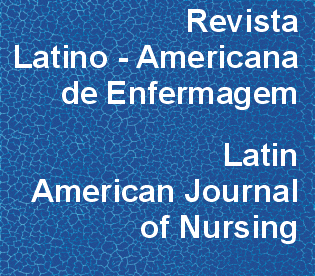Diagnostic labels of NANDA-I in a southern region of Spain
DOI:
https://doi.org/10.1590/1518-8345.1714.2911Keywords:
Research, Nursing Diagnosis, Epidemiological StudiesAbstract
Objective: to determine the incidence of NANDA-I diagnostic labels (North American Nursing Diagnosis Association-International) and to establish the distribution of cases of assistance and the associated labels, according to sociodemographic variables (age and sex). Method: descriptive, cross-sectional epidemiological study of labels of NANDA-I, under ecological design. The distribution of labels was analyzed according to sex and age; the corresponding frequencies were calculated and for each label the incidence were calculated rates with aggregate data from the attended cases. Results: the total number of cases of care under study was 9,928 (41.65% men and 58.35% women). The identified labels were 16,456 (7,084 men and 9,372 women); average of 1.7 labels per case of care; Out of 216 labels proposed by NANDA-I, in its 2012-14 classification, 152 were used, representing 70.4%. The labels with the highest incidence rates per thousand inhabitants were: Anxiety, Willingness to Improve Knowledge and Risk of Infection. Conclusions: the study allowed detecting, through NANDA-I, the answers to the health problems of greater incidence in the users attended.Downloads
Download data is not yet available.
Downloads
Published
2017-01-01
Issue
Section
Original Articles
License
RLAE’s authorship concept is based on the substantial contribution by each of the individuals listed as authors, mainly in terms of conceiving and planning the research project, collecting or analyzing and interpreting data, writing and critical review. Indication of authors’ names under the article title is limited to six. If more, authors are listed on the online submission form under Acknowledgements. The possibility of including more than six authors will only be examined on multicenter studies, considering the explanations presented by the authors.Including names of authors whose contribution does not fit into the above criteria cannot be justified. Those names can be included in the Acknowledgements section.
Authors are fully responsible for the concepts disseminated in their manuscripts, which do not necessarily reflect the editors’ and editorial board’s opinion.
How to Cite
González-Rodríguez, R., Martelo-Baro, M. de los Ángeles, & Bas-Sarmiento, P. (2017). Diagnostic labels of NANDA-I in a southern region of Spain. Revista Latino-Americana De Enfermagem, 25, e2911-. https://doi.org/10.1590/1518-8345.1714.2911



